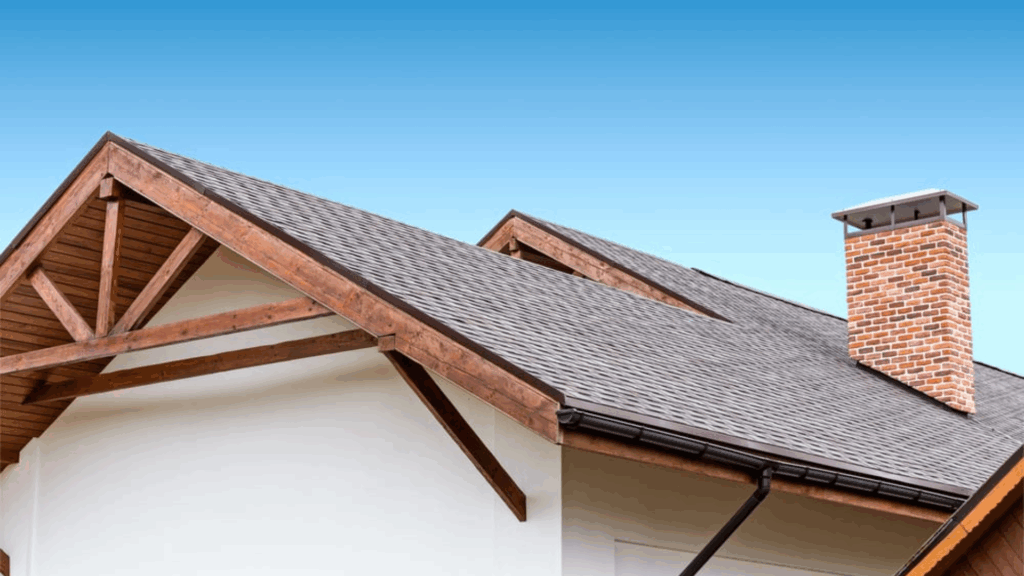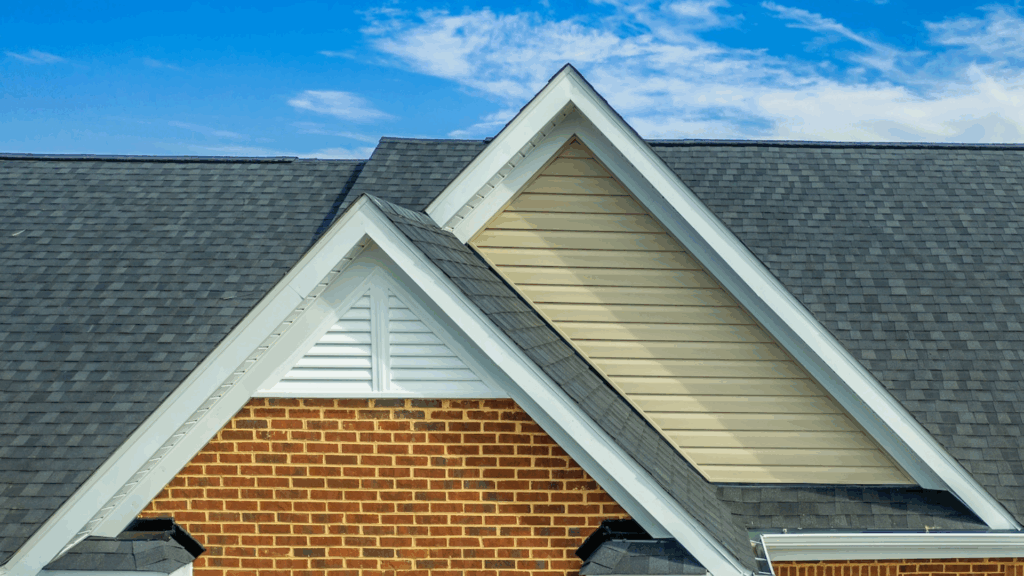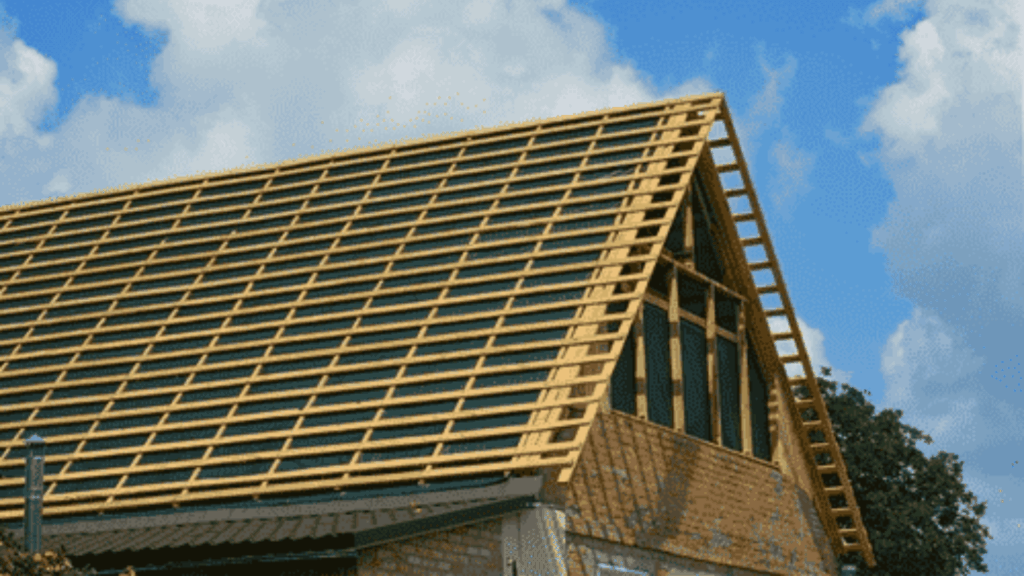Measuring roof pitch might seem tricky at first, but with the right tools and methods, it’s much easier than you think.
If you’re working on a DIY project or a professional job, knowing how to get an accurate roof pitch measurement is essential.
It affects everything from drainage to the overall look of your roof.
In this guide, I’ll show you simple, effective ways to measure roof pitch accurately, so you can feel confident in your results.
I’ll walk you through the best tools to use, whether you prefer something basic or need a more advanced method.
Don’t worry-I’m here to make sure you get it right. By the end, you’ll have all the knowledge you need to measure roof pitch like a pro.
No more guesswork, just solid, reliable measurements that get the job done right. Let’s get started!
What is Roof Pitch?

Roof pitch refers to the angle or steepness of a roof, usually expressed as a ratio of vertical rise to horizontal run.
For example, a pitch of 4:12 means the roof rises 4 inches for every 12 inches of horizontal distance.
It can also be measured in degrees, which shows the angle of the roof’s slope. The pitch of your roof matters because it impacts how well your roof handles rain, snow, and wind.
A steeper roof pitch allows for better drainage, preventing water from pooling and reducing the risk of leaks.
It also helps with airflow in the attic, which affects insulation and energy efficiency.
Additionally, the roof pitch influences the materials you’ll use, as certain materials are better suited for different pitch angles.
Understanding roof pitch is essential for both proper design and ensuring your roof performs well over time.
Standard Roof Pitch: What You Need to Know

When it comes to roofing, a “standard roof pitch” refers to the most commonly used angle for residential roofs.
The standard pitch is usually between 4:12 and 6:12, meaning the roof rises 4 to 6 inches for every 12 inches of horizontal run.
This pitch is ideal for many homes because it provides good drainage while not being too steep or too flat.
Different regions or building styles may have their own preferred roof pitches, but the standard pitch works well in most situations.
A roof that’s too steep can be difficult to work on and could cause issues with wind resistance, while a flatter roof may not shed water as well.
The standard roof pitch also affects things like attic space, insulation, and even the choice of roofing materials.
Knowing what pitch is right for your home helps you make the best decision for both functionality and style.
Essential Tools for Measuring Roof Pitch
- Carpenter’s level (at least 12 inches long): Used to ensure the level is straight for accurate measurements.
- Tape measure: Essential for measuring the rise and run of the roof to calculate pitch.
- Ladder and safety gear: Necessary for safely accessing the roof during measurement.
- Pitch gauge (optional): Provides a precise measurement of the roof’s angle.
- Digital tools: Smartphone inclinometer apps or satellite-based pitch calculators for quick and accurate readings.
Methods to Measure Roof Pitch
There are several effective methods to measure roof pitch, each varying in complexity and accuracy. If you’re a DIY enthusiast or a professional, these techniques can help you get precise measurements for your roof.
1. The 3-12 Rule
The 3-12 rule is a simple and quick way to estimate roof pitch using a 12-inch level or ruler.
Here’s how to do it: Place the 12-inch level or ruler flat against the roof, ensuring it’s level. Measure the vertical rise over the 12-inch horizontal distance.
For example, if the roof rises 4 inches for every 12 inches, the pitch is 4:12.
This method is easy for DIYers and is perfect for getting a rough estimate of roof pitch without any special tools.
While it’s not the most precise, it’s a fast way to get a general idea.
2. Using a Framing Square for Accurate Measurements
A framing square offers more precision when measuring roof pitch.
To use it, place the square with one leg flat against the roof and measure 12 inches along the horizontal leg.
Then, measure the vertical rise at the 12-inch mark. The result will give you the pitch of your roof in a ratio, such as 6:12.
This method is reliable and accurate, especially for those looking for more detailed measurements than the 3-12 rule.
It requires a bit more effort, but it’s ideal for anyone who needs precise roof pitch calculations.
3. Using a Digital Pitch Gauge
A digital pitch gauge, also called an inclinometer, is the most accurate method for measuring roof pitch.
To use it, place the pitch gauge flat against the roof’s surface. Turn the device on and it will measure the angle of the roof and display the result in either degrees or a rise-to-run ratio.
This method is excellent for professionals or anyone who needs quick, precise measurements.
A digital pitch gauge is especially useful when working on steep roofs or when accuracy is crucial for the project, as it takes the guesswork out of measuring.
4. Using Roof Pitch Calculator Apps
Roof pitch calculator apps are a convenient and modern way to measure roof pitch.
Simply input the rise and run of the roof, or use the app’s built-in tools to calculate the pitch.
Some apps even allow you to measure the pitch using your phone’s camera or satellite data.
These apps are ideal for those who want a fast, hassle-free method to determine roof pitch without the need for physical tools.
They’re perfect for both DIY projects and professionals who need quick calculations while on the go.
Common Mistakes to Avoid When Measuring Roof Pitch
Measuring roof pitch can be tricky, but avoiding common mistakes will help ensure you get accurate results. Below are a few errors to watch out for when taking roof pitch measurements.
- Using the Wrong Tools: Using inaccurate or improper tools, like short rulers or makeshift levels, can lead to incorrect measurements.
- Not Measuring the Roof Properly: Improper placement of tools or inconsistent measuring methods can result in errors, affecting the roof pitch calculation.
- Ignoring Roof Shape Variations: Different roof styles (gable, hip, etc.) require different measurement approaches, and ignoring these variations can lead to inaccurate pitch readings.
Conclusion
Measuring roof pitch doesn’t have to be complicated, and with the right tools and techniques, anyone can do it accurately.
If you use the simple 3-12 rule or a more advanced digital pitch gauge, it’s important to choose the right method for your project.
Remember, the key is precision, so make sure you’re using the correct tools and taking accurate measurements.
Don’t forget to consider the roof style, as different shapes can affect how you measure the pitch.
By avoiding common mistakes like using the wrong tools or not measuring properly, you’ll ensure your roof pitch is calculated correctly.
Now that you know how to measure roof pitch, you can tackle your project with confidence, whether you’re a DIYer or a professional.
Trust yourself, and don’t hesitate to double-check your measurements for the best results!
Frequently Asked Questions
What is the most common roof pitch for homes?
The most common roof pitch for homes is between 4:12 and 6:12, balancing drainage, aesthetics, and ease of construction.
Can I measure roof pitch without climbing on the roof?
Yes, digital tools or apps can measure roof pitch from the ground using satellite data or angle gauges.
How does roof pitch affect roofing material selection?
Roof pitch determines suitable materials; steeper pitches work well with shingles, while flatter roofs need materials like rubber or membrane roofing for better drainage.
What if my roof has multiple pitches?
Measure each section separately, considering its individual pitches for accurate material choice and drainage.

